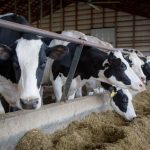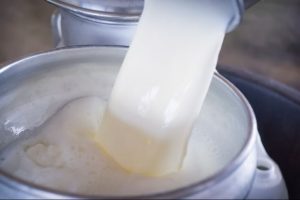
Class IV futures have not been quite as fortunate with contracts breaking lower than the range they had been in for a while (see comparisons below). This resulted in closer month Class III futures moving above Class IV futures where they had not been for quite some time. Butter and nonfat dry milk prices had been declining while cheese price had been increasing. Later contracts continue to show Class IV futures holding above Class III.
1
2
There is a strong historical correlation between corn and milk. However, that does not mean that they will move hand in hand with each other. This has been seen historically and again recently. Corn futures have moved about $1.00 per bushel higher during the period of time milk futures have been moving sideways or lower depending on whether we look at Class III or Class IV futures. Milk prices certainly can have a delayed reaction to higher feed prices if they remain that way this year. But for now, higher feed prices are being compensated for which has resulted in cow numbers increasing over the past two months. It is uncertain the impact this growing year will have on crops. For a time, the price of corn increased due to substantial dryness seen in numerous states. Now, the price of corn seems to be increasing due to continued rains with planting pace falling behind. These are not the only reasons as there are other factors that impact the corn market as well such as strong demand, dryness in South America and the war in Ukraine, but nevertheless, it is interesting. What is also funny is the sayings that we all have heard many times. Such as “Rain makes grain” and “Plant in the dust and the bins will bust”. So, what can we expect this year as both scenarios seem to be unfolding? Could it be that we could have a substantial crop to satisfy demand and the current price ending up being too high? It will take good weather and timely rains for that to take place.
Currently, supply and demand seem to be balanced for dairy. There is sufficient milk to fill bottling and manufacturing needs. In a month, the demand from school accounts will decline with much of that demand shifting to at home consumption increasing retail demand. This may leave more milk available to manufacturing. Cheese and butter continue to see strong exports sales which may absorb any slowdown in domestic demand. This should hopefully support and improve milk prices.
There had been some projections that milk prices could reach as high as $30.00 per cwt this year.
Although, that is a possibility it may be more difficult as time moves forward if demand both domestically and internationally does not improve for dry whey and dry milk powders. We have seen exports slow from the strong pace of last year. This slowing of demand and record high prices has had an impact on buyer interest. Nonfat dry milk had fallen about 20 cents from its high set in February. Dry whey has fallen about 30 cents from its high in February. This plays a significant part in milk pricing. I wrote about this in my April 4th article entitled, “Will Dry Whey Influence Milk Price Direction?”
Based on what is taking place, we certainly are seeing the influence of whey. Even though cheese prices have been trending higher over the past weeks, we have seen futures move within a range. The weakness of dry whey has kept futures from tending higher. Class III futures have been above $25.00 three times since mid-March only to fall back again. That price level may be difficult to attain again without support from dry whey. Class IV have been a bit different as there had been weakness in both butter and nonfat dry milk since that time. More emphasis is generally put on price movement of butter and cheese rather than what is happening with powders. It all needs to be taken into consideration when assessing the market and determining at what level and strategy should be used to protect milk prices for the farm.
Robin Schmahl is a commodity broker with AgDairy, the dairy division of John Stewart & Associates Inc. (JSA). JSA is a full-service commodity brokerage firm based out of St. Joseph, MO. Robin’s office is located in Elkhart Lake, Wisconsin. Robin may be reached at 877-256-3253 or through the website www.agdairy.com.
The thoughts expressed and the basic data from which they are drawn are believed to be reliable but cannot be guaranteed. Any opinions expressed herein are subject to change without notice. Hypothetical or simulated performance results have certain inherent limitations. Simulated results do not represent actual trading. Simulated trading programs are subject to the benefit of hindsight. No representation is being made that any account will or is likely to achieve profits or losses similar to those shown. There is risk of loss in trading commodity futures and options on futures. It may not be suitable for everyone. This material has been prepared by an employee or agent of JSA and is in the nature of a solicitation. By accepting this communication, you acknowledge and agree that you are not, and will not rely solely on this communication for making trading decisions.
























